10 Great Horror Films from Around the World
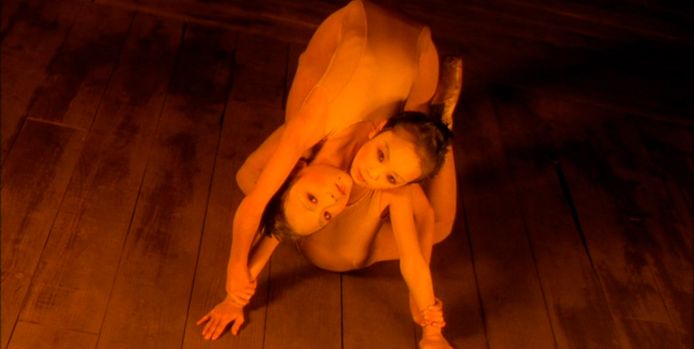
Massive film lover. Whether it's classic, contemporary, foreign, domestic, art,…
Every time you look for new horror movies the same ten titles show up. The Shining, Jaws, The Exorcist, The Haunting, Psycho, Nightmare on Elm Street, Alien, Halloween, The Ring, and Night of the Living Dead. Not to say that these aren’t great films, they’re on the best lists for a reason; they’re classics!
But genres are massive, and there are so many horror films out there that are just as, if not more terrifying than the usual titles that would show up if you Googled “Great Horror Films”. Sometimes foreign films don’t break into the American market. Some great horror films are a huge success in their native countries but for some reason don’t translate abroad.
This list will, hopefully, turn people on to some new titles that might otherwise have eluded the thumbnails that appear in your horror movie Google search.
10. Gozu (Japan – Takashi Miike, 2003)
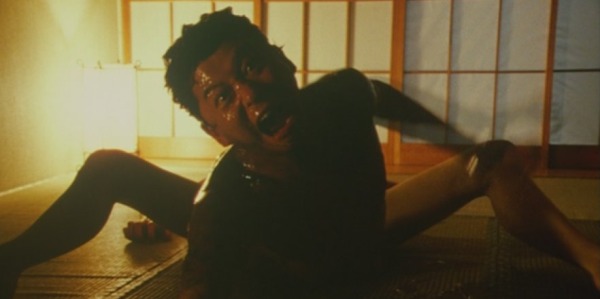
Takashi Miike’s films are anything but subtle. Since his 1999 film Audition earned him some acclaim in the US, his films have received worldwide attention, bringing his status from a shock director to auteur. However, his work is often audacious, and he seems to have become less edgy. Yet, coming from the director of Ichi the Killer, that statement doesn’t mean he’s gone soft.
Gozu is one of Miike’s most realized films; easily one of his best and most terrifying. It’s an amalgam of everything that is in Miike’s work, and a collection of influences and genres. Gozu is a combination of The Vanishing, Vertigo, Twin Peaks, and Jules and Jim told through the exploits of a low ranking Yakuza gangster and his mentor who he is sent to kill. Even though this may seem like an average gangster/Yakuza storyline, the result is anything but, and like most of Miike’s work, Gozu is terrifying and occasionally funny. Sho Aikawa and Renji Ishibashi, frequent Miike collaborators, turn in great performances. Aikawa as the insane targeted yakuza and Renji Ishibashi as the lecherous caricature of the typical Yakuza boss who has found a new use for ladies, turns out to be one of the films more disturbing elements.
Gozu is scary, strange, funny, disturbing, sexual and, like all of Takashi Miike’s work, excessive. It’s also a great melding of genres: on one hand it’s a full-blooded Yakuza film, but it’s also a completely realized horror film that pushes the limits in content and style. It’s shocking, but it’s well made: Gozu proves that Miike is a director who has grown from the V-cinema/video nasty, low budget provocateur that was once his reputation.
9. Peeping Tom (U.K. – Michael Powell, 1960)
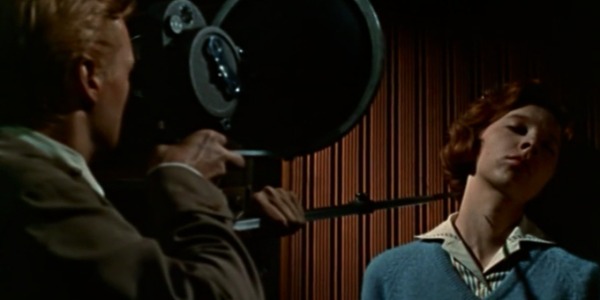
One of the best British horror films of all time, made by one of Britain’s most beloved filmmakers, made history for two reasons. One: it was a masterfully created thriller that is frequently compared to the work of Alfred Hitchc*ck. Two: it basically destroyed the career of its director Michael Powell. After making classics such as The Red Shoes, A Matter of Life and Death (a.k.a. Stairway to Heaven), Black Narcissus, and The Life and Death of Colonel Blimp, Powell’s dark study of a murderer/cinematographer, whose phallic tripod is used to kill his victims while he photographs them, must have been jarring for an audience. Especially after establishing himself as a beloved filmmaker in the U.K. with his successful line of films.
Released a year before Psycho, Peeping Tom carries all the trademarks of the “slasher” genre, however, that connection would be reductive when discussing a film as well-crafted as Peeping Tom. The lead, played by the baby-faced Carl Boehm is nothing short of brilliant and his portrayal of the homicidal cameraman is both terrifying in the films as well as fictionalized counterpart to the director himself, which is scary in another, more literal way which might explain the negative reaction it received upon it’s release.
To recount, iIn the early sixties two English filmmakers made movies about serial killers who murder people as a result of their abusive parents. One was smash hit and made a fortune and cemented its director as an international sensation. The other destroyed the career of its filmmaker due to its lurid material and never made a film again. Can you guess what those two films were and who directed them?
Nowadays, of course, Peeping Tom is regarded as a classic, and it’s hailed as one of the best known English horror films of all time.
8. Phenomena (Italy – Dario Argento, 1985)
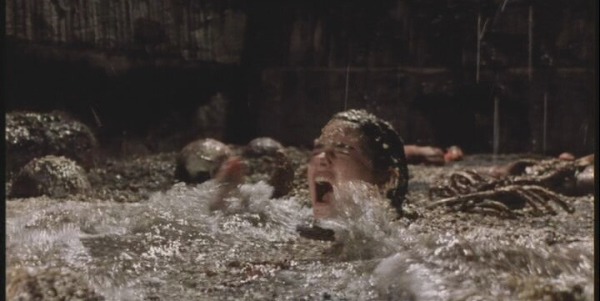
Usually, the most credited Dario Argento film is Suspiria. Suspiria is indeed a great film, but Phenomena is another one of his classics that may not have the wild lighting and soundtrack, but has more developed characters and an elaborate story involving telepathy, insects, a blade-wielding chimp, a mutant child, and Donald Pleasence. With another great Goblin score and a director at the height of his creative powers, Phenomena would turn out to be one of Argento’s best films.
Although the film may not have the supernatural feel of his earlier classics such as Suspiria and Inferno, Phenomena is one of the most loaded horror films from the 1980’s. Jennifer Connelly turns out a great performance as the young lead (after her debut in Once Upon a Time in America) who is endowed with insect telepathy. Donald Pleasence is great, as usual, playing Professor John McGregor. But it’s Daria Nicolodi who steals the show. Once she’s revealed as a homicidal maniac we learn that Argento’s muse and former lover can really put on a show.
Phenomena explores murder investigating through the use of telepathy with insects, gore (of course) and a truly terrifying and bracing climax. It doesn’t revolve in the supernatural, but is a combination of the paranormal and the genre that brought Argento into the limelight, the distinctly Italian “stalk and slash” style of the giallo. Another element that sets this film away from Argento’s other works is that its characters are well-developed, and the story serves the film much better than some of his earlier films.
7. Curse of Frankenstein (U.K. – Terrence Fisher, 1957)
Curse of Frankenstein is the film that put Hammer Studios on the map, and gave way to the term, “Hammer Horror” as we know it. Peter Cushing and Christopher Lee made history as one of horrors best screen pair: Cushing’s charismatic portrayal of Baron Frankenstein was a fresh update from the maniacal cackle of Colin Clive in James Whale’s original 1931 Frankenstein.
Universal Studios threatened to sue Hammer if their creation bore any resemblance to their Karloff monster by makeup guru Jack Pierce. Sometimes creativity is born from restriction. Christopher Lee, who at the time was relatively unknown, was cast for his height. His interpretation of the monster was that he should play him as a large child. Some have criticized Les Bowie’s makeup of the monster. I think it looks great, and the bandaged covered costume elevates the level of credibility to the idea of a man-made monster.
Another important element of the film is its director Terrence Fisher. Fisher, who would turn out to be in my opinion Hammer’s best director. His interpretations of Victorian horror are richly textured, expertly framed, very colorful, and surprisingly restrained. Despite the X rating, Fisher’s films tend to be the best in the Hammer canon. The pacing, and rhythm of this film are brilliantly executed – Curse of Frankenstein truly belongs in Hammer’s master class of films.
6. Hausu (Japan – Nobuhiko Obayashi, 1977)
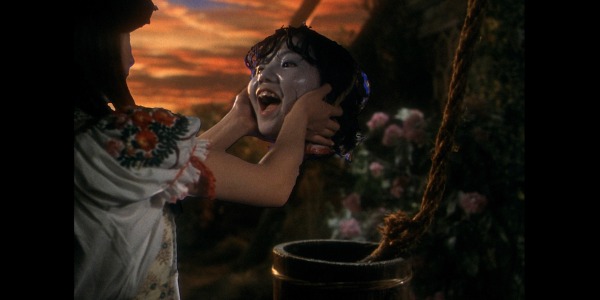
Obayashi’s 1977 film Hausu is best described as part haunted house story, teen film, ghost story, executed by a director who incorporates gore, surrealism, hallucinatory imagery that is thoroughly original and modern. Stylistically, it echoes the early work of Georges Méliès in its execution. Hausu is a film that honestly defies explanation or proper categorization, though its story relatively simple. A high school girl invites her six friends to visit her aunt’s house in the country, and, of course, things are not what they seem. With names like “Fantasy”, “Sweet”, and “Mac” a coming of age story about a group of school girls going to a haunted house would seem like another tired cliche. But Obayashi was aware of the cliche, and decided to design the style of the film in such a way that would make Hausu one of the most insanely visual gems of Japanese cult cinema.
Hausu is a non-stop tapestry of entertainment, and the film doesn’t go for more than two minutes without some exciting imagery filling the screen. Some standout scenes include a severed head floating out of a well and biting a girl in the butt, a killer piano, a blood spewing demon cat, combative mattresses, and the ghost of a spinster aunt who never grows old.
Nobuhiko Obayashi created a haunted house movie that plays out like a high school, bubble gum nightmare that’s part horror and a little bit of everything else. If you look at the tradition of Japanese horror films like Onibaba and Masaki Kobayashi‘s classic Kwaidan, they’re quiet, haunting meditative ghost stories rooted in Japanese cultural tradition. Hausu couldn’t be anything further from that tradition and style of filmmaking that is synonymous with Japanese horror films even to this day. Perhaps that’s why Hausu is so fresh and entertaining.
5. Theatre of Blood (U.K. – Douglas Hickox, 1973)
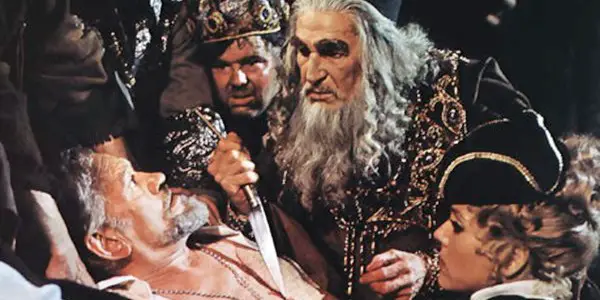
It’s hard to decide which Vincent Price film to choose as a favorite. As an auteurist actor, specializing in the horror genre, he’s a great figure in the genre among giants such as Boris Karloff, Bela Lugosi, and even the great Lon Chaney. Out of all those great figures, Vincent Price probably starred in some of the most colorful films, and Theatre of Blood is among the brightest.
The role of Edward Kendal Sheridan Lionheart was one of Prices favorites, and understandably so. In the tradition of The Abominable Dr. Phibes, a various amount of people is lined up to be slain by a vengeful Vincent Price seemingly from beyond the grave. Instead of doctors this time the targets are film critics, and Price turns out one of his best performances as a derelict actor whose hammy Shakespeare performances made him the pariah of the acting circle in 1970’s England. Modelling his murder plots after the cinematic slaying from the famous Shakespeare he portrayed, it’s a countdown film and each critic “get’s theirs” in various, gruesome and often hilarious ways.
What makes Theatre of Blood so special is that it’s a fully fledged horror film with a slew of creative murders and a biting satire at the same time. It’s witty, bloody, well crafted and entertaining every step of the way. I’m sure plenty of actors have mumbled, “I’d kill that critic” and Theatre of Blood could be a catharsis or just the admiration of playing a diverse and fun role.
Theatre of Blood might not be the scariest film, it might not be the best horror movie, but it’s one of the funnest out there.
4. The Wicker Man (U.K. – Robin Hardy, 1973
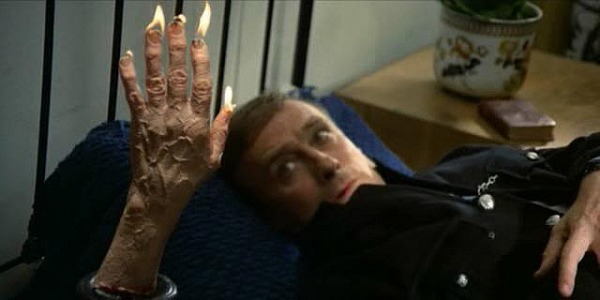
One of the greatest oddities of the 1970’s horror cycle, Robin Hardy’s The Wicker Man, is an incredible film and a truly unique piece of work. What makes The Wicker Man stand out so much? For one, it’s probably one of the titles that can be categorized as a folk musical as well as a horror movie. It’s a film that examines the stuffy British values, against the counter-culture and sexual revolution in the wake of the 1960’s.
Edward Woodward investigates the disappearance of a young girl on an island that happens to be inhabited by a village of pagans. What else would terrify the English upper class than a bunch of smiling villagers, who are at their happiest when they’re having sex, dancing naked, playing music, and having a good time? The inhabitants of Summerisle are the alleged “monsters” of the film but the only person having a bad time is the protagonist, police sergeant Neil Howie. Edward Woodward is great, but like most of the films he is in, Christopher Lee stole the show.
When the film was advertised Christopher Lee was absent from the trailers: the studio didn’t want the public to see it as a horror film and feeling that Lee would alter their perception if he was around. A daring move considering he was the films biggest star. As the leading name of horror films, Christopher Lee’s portrayal of Lord Summerisle isn’t a menace, but the charismatic leader of the island community. It’s that level of contentment and joy the citizens of Summerisle project, especially when they burn people alive in a human sacrifice that make this film scary as it is. The imagery is strange, and the films climax is jarring. One of the elements that make the film so effective is its actual lack of the supernatural and the warmth of the pagan villagers as they sing and hold hands watching a man burn to death. He screams and prays to his god, and god doesn’t come.
Like most great horror films, this would be Christopher Lee’s favorite role (until the Lord of the Rings series) and the film is a definitive cult item. Cinefantastique referred to it as “the Citizen Kane of horror films”; this might be an odd comparison, but it serves as a great example of its influence and sustainability. It’s a strange and fully realized film that has a way with staying with you after its finale. What makes it great is that it couldn’t have been made anywhere else with the same effect. The 2006 remake is evidence of that theory, unless you’re in for a good laugh.
3. Vampyr (Germany – Carl Th. Dreyer, 1932)
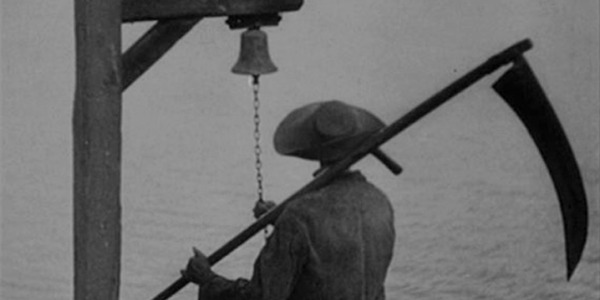
There are plenty of great horror films from the early thirties, starring the pioneering screen actors like Lon Chaney, Bela Lugosi, Boris Karloff, and Conrad Veidt. But Carl Dreyer’s Vampyr is easily the most entrancing horror film from that era, a beautiful marriage of art and terror. Although the director’s output was limited, his stamp is recognized and respected as one of the most renowned voices in the history of international cinema. Vampyr is an example of his talent and it’s justified as a work of art and a work of a fully realized horror.
As an early sound film (Dreyer’s first) some modern viewers might be turned off by the lack of dialogue, however, it works to a great effect and only adds to the films feeling of unnerving that looms over its subjects. A student is lured into a small village in France, and the supernatural forces that are ever present are captured magnificently captured by Dreyer and the cinematographer he worked with before on The Passion of Joan of Arc, Rudolph Mate. Their collaboration would produce another visually staggering masterpiece as Vampyr boasts some innovative and pioneering visuals. The use of light paired with Carl Dreyer’s sense of movement and staging are more than impressive, and the star of this film is the camera.
A relatively simple story of a man stranded in a castle inhabited by vampires is a simple story, and its execution immaculate. If you comprised a collection of still images, Vampyr would be equally scary as a montage, but the arrangement of these images is immaculate and an original piece of horror filmmaking.
2. Retribution (Japan – Kiyoshi Kurosawa, 2006)
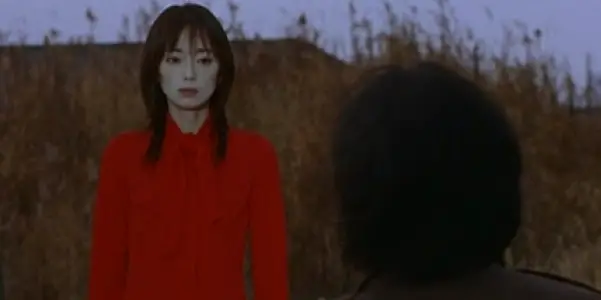
When you think of modern Japanese horror films, it usually conjures up images of extreme sexual gore and horror. Kiyoshi Kurosawa, a masterful director taking stylistic cues from Val Lewton, incorporating this typical Japanese horror filmmaking with his distinctive stamp of mood and atmosphere, has gone to make some truly terrifying films.
Retribution is a modern ghost story told with great effect by its director and frequent leading actor Koji Yakusho. The film is part horror story, part police procedural, and every part culminates into a subtly terrifying, and moody thriller that is meditative and horrifying. The story is deceptively simple: a homicide investigator is looking into a case where a young woman is drowned in a puddle of water. Afterwards he is haunted by images of a ghastly apparition of the murder victim.
There are no “jump” moments, no hard hitting sound effects are fast camera tricks that you’d expect from a modern horror movie. The beauty of Kiyoshi Kurosawa’s films is that they aren’t made to “shock” you or bombard you with horrific images. His style (in this film particularly) is the idea that a movie should be something that happens to you, and the point of view is that you can only see and hear what is going on around the characters, the rest is up to you.
Retribution is a smart and mature film that relies on craftsmanship instead of scare tactics, Kurosawa respects his audience, and his films require a level of dedication from the viewer. That may sound like a lot but it’s well worth it if you want to be terrified in a way that modern audiences might not be familiar to.
1. The Devils Backbone (Mexico – Guillermo del Toro, 2001)
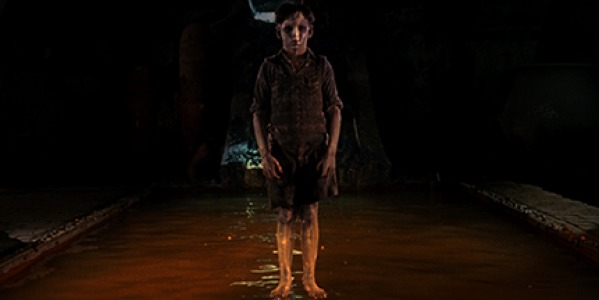
After his debut Cronos (and the misguided foray that became Mimic in 1997) Guillermo del Toro returned to Mexico to direct one of best works to date, The Devil’s Backbone. Like most of the director’s films, and best horror movies from around the world, The Devils Backbone isn’t just a scary story. It’s a densely layered and philosophical study of politics, war, the supernatural, seen from the often perplexing and confusing nature of children orphans who are learning about life and death against the canvas of the Spanish Civil War.
The Devil’s Backbone was a very passionate project for Del Toro and it shows. Every element of the film plays out with stunning authenticity and respect. We see the horrors of an uneasy spirit who won’t rest quietly given the unpleasant nature of his death. On the other side of the supernatural, we are witness to the real horrors of The Spanish Civil War.
Fantasy, reality, and politics all form an equally terrifying and compelling historical drama. Guillermo Del Toro once told Time magazine “Much like fairy tales, there are two facets of horror. One is pro-institution, the other is completely anarchic and anti-establishment.”. The Devils Backbone is deftly executed and fully accomplished piece of horror and dramatic realism. A balance you don’t see very often, if it all. Its distinction will ensure it a place in horror movie history.
Bonus: Three… Extremes Anthology (Hong Kong / South Korea / Japan – Fruit Chan, Park Chan-wook, Takashi Miike, 2004)
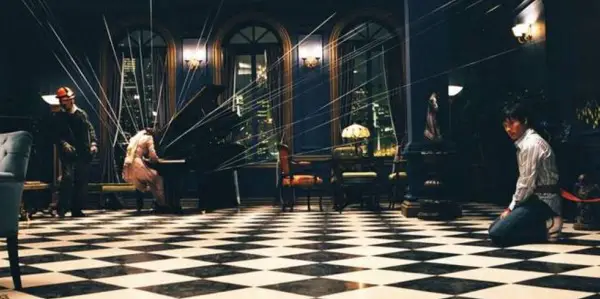
The horror anthology formula has been in horror movies for years, starting in 1924 with the German silent Waxworks. It wasn’t until 1945 that the sub-genre would get it’s official place in the world of movies with the release of Dead of Night. Amicus Studios made a name for themselves with their anthology films starting on a high note with Dr. Terror’s House of Horrors, through The House That Dripped Blood, Tales From the Crypt, and the lesser Tales that Witness Madness.
After these films in the 1970’s, the sub-genre seemed to have slowed down, until 2004, when three of Asia’s top names in horror/thriller filmmaking were assembled to each direct a segment for a modern anthology horror film: Three… Extremes. Hong Kong new waver Fruit Chan, Japanese shock maestro Takashi Miike, and South Korean newcomer whose now-classic Oldboy had just come out, Park Chan-wook. The results are fun, scary and even disturbing. Clocking in at an 118 minutes, these three stories are equally terrifying and bear each of the directors’ creative stamps.
Part one, from Fruit Chan, is Dumplings. It is both disturbing as well as a carefully examined social commentary, a story that centers on the lengths people will go through to prolong their looks. The hot-button subject of stem cell research make for a disturbing and telling work. It’s a combination of Dorian Grey and Elizabeth Bathory in contemporary Hong Kong, and you might not ever eat dumplings again.
The second feature from South Korea’s celebrated filmmaker Park Chan-wook might be the most entertaining. Playing on his status as an up and coming director his segment, Cut, is about an up and coming director. After wrapping up a day’s shoot the young filmmaker comes home to find his wife (a pianist) bound and gagged to her piano with a seemingly endless amount of wires that are intricately designed to cut off her fingers. The home invader has a curious interest in the successful lead character; he’s rich, he’s renowned and talented, and strangest of all, he’s nice! Not being able to accept that, the captor has devised that he has to murder a child in order to save his wife’s fingers from being cut off. The scenario is brutal, and the story plays with our sense of morality ( a recurring theme in all of the director’s work) and has a wickedly dark sense of humour.
The third and easily the most unsettling entry is Box, from non-other than Takashi Miike. If you’re familiar with his work, you know you’re going to see something you’re not expecting or ready for. For those who aren’t as familiar with the director he seems to have two styles: his films tend to be excessive and over the top with sex and violence of all kinds, Ichi the Killer is probably the best example. Or they are quiet and unnerving, with a sort of a slow burn that you see in his 1999 film Audition.
Well, Box falls into the latter category, and it’s a twisted little tale that is bizarre, and frightening in the tradition of Takashi Miike’s cannon. In a flashback scenario, a young woman recalls a circus act where she and her twin sister perform bodily contortions where they fit themselves into small boxes, after they’re closed they disappear, and flowers emerge. After some incestual implications, and some events that explain why this adult may or may not still have a twin sister. The ending will leave you with more questions than answers, but that’s how some of the best horror films end, and this is an anthology of Asian auteurs ranks among the best.
What do all these films have in common? They’re scary, they loosely fit in the same genre, but there’s something more to these films. They all break barriers, or tread territories other filmmakers might have left alone. In conclusion, it’s always fun to discover new movies. With so many titles it’s not always a bad thing to step away from the “top ten” lists and find something new.
Have you seen any of these movies, and if you have, what do you think about them? If you haven’t yet, are you enticed to check them out?
Sound off in the comments!
(top image source: Three… Extremes (Takashi Miike‘s Box segment) – Tartan Video)
Does content like this matter to you?
Become a Member and support film journalism. Unlock access to all of Film Inquiry`s great articles. Join a community of like-minded readers who are passionate about cinema - get access to our private members Network, give back to independent filmmakers, and more.
Massive film lover. Whether it's classic, contemporary, foreign, domestic, art, or entertainment; movies of every kind have something to say. And there is something to say about every movie.













